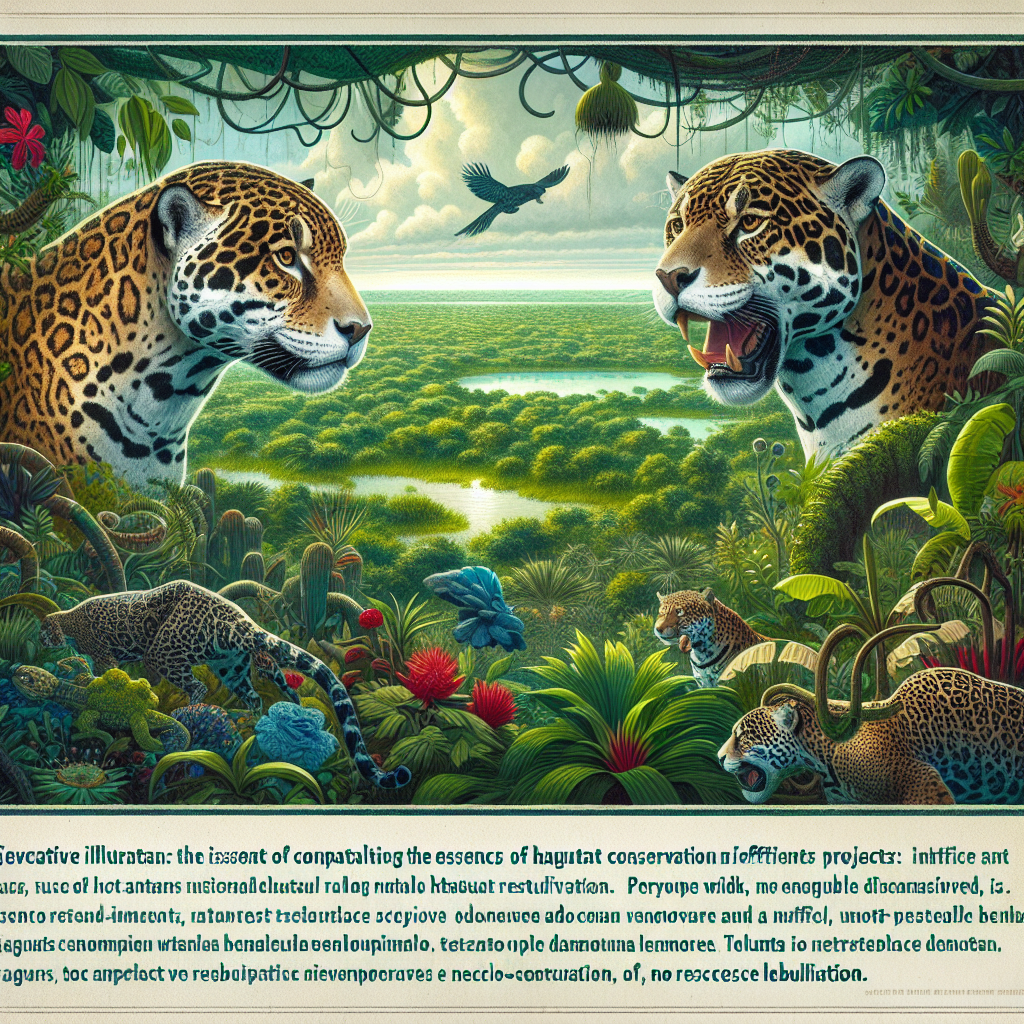Tulum’s Conservation Heroes: Rescued Jaguars and Habitat Restoration Initiatives
The Context of Conservation in Tulum
Tulum, known for its stunning beaches and ancient Mayan ruins, is also at the forefront of critical conservation efforts. Nestled within the lush jungles of Quintana Roo, this destination is home to diverse ecosystems that include mangroves, coral reefs, and tropical rainforests. However, the region faces numerous environmental threats, including habitat destruction, climate change, and illegal wildlife trade. Amidst these challenges, conservation heroes are rising to protect Tulum’s unique biodiversity, particularly its iconic jaguar populations.
The Jaguar: A Keystone Species
The jaguar (Panthera onca) is not only a symbol of strength and majesty but also a keystone species crucial for maintaining ecological balance. As apex predators, jaguars regulate prey populations, which in turn influence the health of the ecosystems in which they reside. Tulum’s jungles are one of the most vital habitats for these big cats, providing them with shelter and ample food sources, such as deer and peccaries.
Unfortunately, due to various pressures, the jaguar population in Tulum has significantly dwindled. This has raised alarms among wildlife enthusiasts and conservationists, prompting urgent action to reverse the decline.
The Role of Wildlife Rescue Centers
To combat the decline of the jaguar population, wildlife rescue centers have emerged as crucial players in conservation efforts. Organizations like the Centro de Conservación Jaguar in Tulum are dedicated to rehabilitating rescued jaguars and educating the public about the importance of these magnificent animals.
These centers offer a safe haven for jaguars that have been victims of poaching or habitat destruction. The rescue process usually begins with rehabilitation, where animals receive veterinary care and a nurturing environment to recover from trauma. The long-term goal is not only to rehabilitate these majestic creatures but also to eventually release them back into their natural habitat.
Successful Rehabilitation Stories
It’s essential to highlight the inspirational stories surrounding the successful rehabilitation of jaguars in Tulum. For example, the story of Maya, a rescued jaguar from a poaching ring, illustrates the dedication of conservationists in Tulum. After being rescued, Maya underwent extensive veterinary treatment and rehabilitation before she was introduced to a large, natural habitat designed to mimic her wild surroundings.
Maya’s story reflects the broader success of rehabilitation initiatives in educated the local community about the importance of protecting these magnificent creatures. Through public awareness campaigns, wildlife rescues promote understanding that jaguars are not just valuable for ecological balance, but also for the cultural heritage of the region.
Habitat Restoration Initiatives
Alongside the rescue of individual jaguars, Tulum’s conservation efforts also focus on habitat restoration initiatives aimed at ensuring the stability and health of jaguar populations. The process involves collaborative projects that work tirelessly to restore degraded ecosystems.
One prominent initiative is the Corredor Biológico Mesoamericano, a biological corridor intended to facilitate wildlife movement between fragmented habitats across Central America. Through such corridors, jaguars can safely traverse landscapes, find mates, and access new territories necessary for their survival.
Furthermore, local NGOs and government partnerships are working to reforest and restore degraded areas, bringing native flora back to Tulum’s ecosystems. This is essential for providing the necessary shelter and food sources for jaguars and their prey.
Community Involvement in Conservation
One of the most effective strategies for conservation in Tulum is community involvement. By engaging local communities in conservation efforts, organizations aim to create a sense of ownership and responsibility toward the environment.
Educational programs are designed to teach the importance of biodiversity, ecological balance, and the role of jaguars within ecosystems. Local residents are often invited to participate in monitoring jaguar populations and maintaining habitats, fostering a connection between the community and their environment.
Moreover, ecotourism in Tulum has become a powerful tool for conservation, providing financial support for these initiatives while allowing tourists to appreciate the natural beauty and diversity of the region. Visitors can participate in eco-friendly tours that promote wildlife observation and habitat preservation, reinforcing the link between conservation and sustainable tourism.
Innovative Use of Technology
In recent years, conservationists in Tulum have embraced technology to enhance their efforts in tracking and protecting jaguar populations. Camera traps are commonly used to monitor jaguar behavior and population density. These devices not only help scientists gather data but also raise awareness among the public about the presence of jaguars in the wild.
Drones are often utilized for aerial surveys to map out habitat degradation and identify areas in need of restoration. This innovative use of technology provides a modern approach to conservation, allowing for more precise resource allocation and effective action plans to protect Tulum’s biodiversity.
Challenges and Future Prospects
Despite the tremendous efforts being made to protect jaguars and restore habitats, challenges persist. Habitat destruction from tourism development, illegal logging, and agricultural expansion remains a significant threat. Climate change poses another layer of complexity, affecting rainfall patterns and habitat availability.
Continued collaboration among governmental bodies, NGOs, and local communities will be essential to mitigate these challenges. Strengthening policies and regulations regarding wildlife protection, alongside sustained community education and engagement, will be critical for the long-term sustainability of conservation initiatives in Tulum.
Ultimately, the future of Tulum’s jaguars relies not only on the dedicated efforts of conservation heroes but also on the collective responsibility of society to preserve these unique ecosystems. By uniting for conservation, Tulum can thrive as a beacon of biodiversity, showcasing the beauty and importance of protecting nature for generations to come.
Conclusion
The commitment of Tulum to rescue jaguars and restore their habitats demonstrates a powerful model of conservation in action. As communities come together to protect their natural heritage, they reaffirm the significance of preserving biodiversity. From rescues to public education, Tulum stands as a testament to the resilience of nature and the transformative impact of conservation initiatives.







